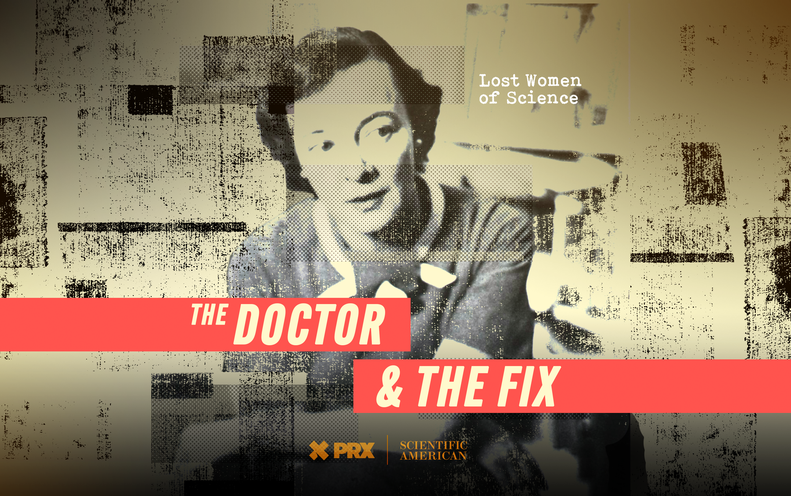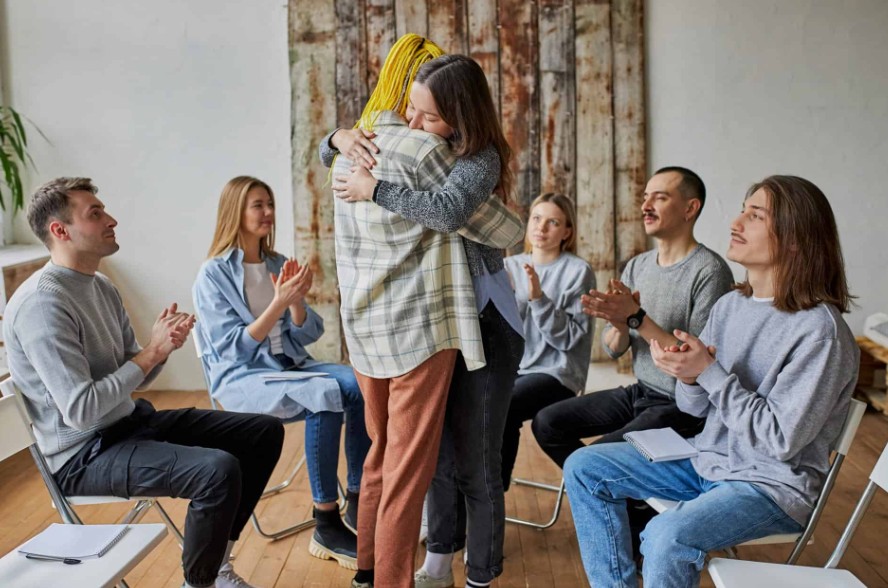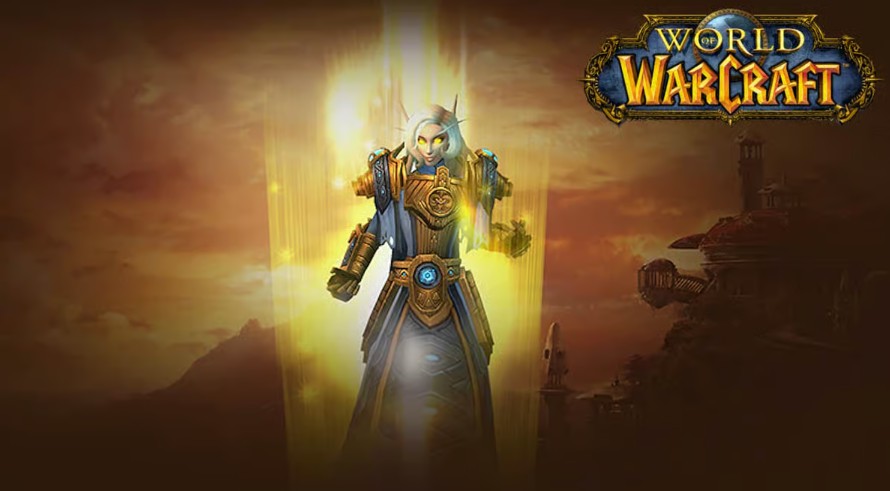
In 1946, Marie Nyswander, a recent medical school graduate, joined the U.S. Public Health Service looking for adventure abroad. Instead, they sent her to Lexington, Kentucky’s Narcotic Farm, a prison and rehabilitation facility for people with drug addiction, where therapies included milking cows and basket-making. It was at Lexington that Marie encountered addiction for the first time, and what she saw there disturbed her—and reset her life’s course.
[New to the Lost Women of Science? Listen to Episode One of our last season here.]
LISTEN TO THE PODCAST
EPISODE TRANSCRIPT
The Lost Women of Science podcast is made for the ear. We aim to make our transcripts as accurate as possible, but some errors may have occurred nonetheless. In addition, important aspects of speech, like tone and emphasis, may not be fully captured, so we recommend listening to episodes, rather than reading transcripts, when possible.
—-
CAROL SUTTON LEWIS: Before we start, just a quick note to let you know, this season of Lost Women of Science is about drugs and also, a little bit about sex. The content and the language are mainly for adults. Also, note that in the coming episodes, we’ll be including a lot of archival audio from the mid-20th century, so you’ll be hearing some outdated drug addiction language, as well as perspectives that don’t reflect our own.
FRED WEISGAL: It is quite clear that the officials today who have been handling the narcotics problem have failed completely.
KATIE HAFNER: In the 1960s, heroin use in the United States was rising at an alarming pace. And nothing seemed to help, as this lawyer told a TV reporter in Baltimore.
FRED WEISGAL: All that they have been able to do is send people to prisons, have these people come out, and they are still drug addicts.
[fades low]
KATIE HAFNER: But in 1965, a team of doctors at Rockefeller University announced what sounded like a miracle: they’d found a treatment for heroin addiction that actually worked.
They’d been running an experiment with a small group of patients for a couple of years—and the results, they were astonishing. Their patients, all men, aged 19 to 37, had been addicted to heroin for an average of nine years. Most hadn’t finished high school and had more than one arrest on their records. All had tried to quit heroin before and all had failed. But then, the doctors gave them something called methadone hydrochloride.
CAROL SUTTON LEWIS: Methadone wasn’t a new drug. It was already being used to help patients detox – basically to ease the symptoms of withdrawal. The difference here was that the doctors at Rockefeller were giving doses much higher than those normally given—and it completely transformed the patients.
CAROL SUTTON LEWIS: One man started painting. Another one finished high school and got a scholarship to go to college. Most remarkably—the relentless cravings disappeared. They could stop thinking about heroin, stop dreaming about it at night. And it took just a day or two to start seeing the differences.
KATIE HAFNER: And yet, the Federal Bureau of Narcotics wanted all of this stopped! In fact, the Bureau had been monitoring one of these Rockefeller doctors for years: Marie Nyswander. She was the psychiatrist on the team. And she’d been working on addiction for more than a decade at this point. And the men at the Bureau were not fans of her work. Narcotics agents would show up at her office unannounced, and they’d come to her meetings. They thought her approach to addiction was completely wrongheaded and dangerous. But she wouldn’t stop, not then, and definitely not now that she was finally seeing results. In 1965, Dr. Marie Nyswander was a legend in the making and she was set to revolutionize the treatment of addiction.
[theme music starts]
KATIE HAFNER: This is Lost Women of Science. I’m Katie Hafner.
CAROL SUTTON LEWIS: And I’m Carol Sutton Lewis. And this season, The Doctor and the Fix: How Marie Nyswander changed the landscape of addiction.
KATIE HAFNER: Marie Nyswander was a Freudian psychoanalyst in New York City, who owned a private practice on Park Avenue where she specialized in sex therapy. But she was a study in contrasts. When she wasn’t seeing private clients on the Upper East Side she was working in a bleak tenement building in East Harlem, treating heroin addiction.
CAROL SUTTON LEWIS: Marie Nyswander was one of the most intriguing figures in 20th century medicine, and the mark she left on addiction treatment, it’s indelible.
[theme music ends]
CAROL SUTTON LEWIS: So Katie, I imagine a lot of people listening to this are going to be pretty skeptical. I mean it’s 2023, and clearly we have not solved the problem of heroin addiction—or any kind of opiate addiction. There’s clearly more to this story.
KATIE HAFNER: Oh yes, there is. Methadone, their miracle drug, isn’t a cure for heroin addiction. In fact, methadone is an opioid. Heroin is too, but there are differences in how they’re made and how they make you feel. Heroin comes from the opium poppy, and methadone is synthetic. But they’re both hitting the same receptors in the brain and body, So think about it—the idea that you would treat an opioid addiction with another opioid, it isn’t just counterintuitive, it’s radical—at least for the U.S. in the early 60s. And it made Marie Nyswander some very high profile enemies.
CAROL SUTTON LEWIS: But we’re getting ahead of ourselves. So let’s back up, all the way up to the very beginning of Marie Nyswander, in 1919.
EMILY DUFTON: She was born in Reno, Nevada to a German father and an American mother.
CAROL SUTTON LEWIS: Emily Dufton is a drug historian and writer.
EMILY DUFTON: They divorced when she was two. So she was raised almost entirely by her mother—Dorothy Bird Nyswander—who is just this really groundbreaking, amazing leader in public health, global public health especially.
CAROL SUTTON LEWIS: Dorothy instilled in Marie the importance of being of service to others and also being tough as hell. There’s a great story about a time that she and her mom were camping when a grizzly bear showed up. Dorothy just clapped and told the bear to go away. And it did.
The two of them moved a few times during Marie’s childhood. They lived in California, then Utah, and then New York. When Marie was a little kid, her mom taught high school during the day, and worked on her Ph.D. from UC Berkeley at night.
EMILY DUFTON: So she raised Marie to be very cultured and very literary. They’d hang out with like Margaret Mead at night, um, really interested in anthropology and very independent.
CAROL SUTTON LEWIS: And Marie, she really was an independent thinker, even when she was young. Marie was actually born Mary Elizabeth Nyswander, but she decided there were just too many Marys out there, so she changed her name. She told her mother that “Marie” had more “character.”
So she was independent, but she also really followed in her mother’s footsteps, and Marie decided to become a doctor. She went to Sarah Lawrence College, an artsy, progressive school just north of Manhattan, then enrolled at Cornell medical school, where she was one of just a handful of women in her class.
EMILY DUFTON: She wanted to be a surgeon, right? She didn’t wanna just be a doctor. She wanted to be a surgeon. I think that speaks to her ambition. She really pushed herself to do a lot of, a lot of things that, I mean, you think about this woman in like ‘41, like who is pushing themselves to these lengths. Um, but she does it and it’s- it’s like you can’t imagine her doing anything else.
CAROL SUTTON LEWIS: And at this point Marie wasn’t even thinking about addiction or its treatment. It wasn’t covered in any of her classes. But that all changed in 1946, when she did her medical residency with the United States Public Health Service.
EMILY DUFTON: Well, she joins the public health service actually because she wants to travel. And she kind of wants to go and have an international adventure for a while. So she joins the PHS with, with that as her goal. And where they send her instead is Kentucky. [laughs]
CAROL SUTTON LEWIS: Lexington, Kentucky, known for its rolling bluegrass hills and horses. It was also home to a massive federal drug rehabilitation facility and prison – known as “Narco” to locals. It was just outside of the city. And when Marie, this ambitious would-be surgeon, showed up there on assignment, she saw things that would completely alter her life’s course.
DAVID COURTWRIGHT (1981): Testing, 1, 2, 3, 4. Testing, 1, 2, 3, 4.
MARIE NYSWANDER: I’m just sitting here comfortably.
DAVID COURTWRIGHT: 1, 2, 3, 4.
MARIE NYSWANDER: 1, 2, 3, 4.
DAVID COURTWRIGHT: This is an oral history interview with Dr. Marie Nyswander. This is June 22nd, 1981.
KATIE HAFNER: A few years before Marie died, a young historian named David Courtwright visited her at her Rockefeller office in Manhattan. She was in her early 60s then, still working, and David had come to interview her about her life and career. But, the first thing he remembers noticing was the smell.
DAVID COURTWRIGHT: I could smell nicotine. And, uh, I knew from, from what others had told me that, um, she was a smoker. And I knew that that had led to some significant health problems, battles with cancer. And I was a little bit surprised actually, that I could still smell the, the nicotine on her.
KATIE HAFNER: Marie had smoked since she was a teenager, and despite her decades of addiction work, she hadn’t managed to quit. But the other thing David noticed was it felt like Marie was sizing him up.
DAVID COURTWRIGHT: I mean, I think uh, as a trained psychoanalyst, I mean, she’s obviously gonna be looking me over and judging me, and I supposed to some degree I felt that I was being judged.
KATIE HAFNER: I hear that in her voice. This cool appraising tone, and throughout the entire interview, when personal stuff comes up, she’s curt. She lets the silences kinda hang there. But then, David asks about Lexington.
DAVID COURTWRIGHT (1981): And what was your initial reaction?
MARIE NYSWANDER: To Lexington, Kentucky?
DAVID COURTWRIGHT: And that, that’s the moment I think when the interview really takes off. Uh, and (laughs) and there, there’s some kind of role reversal, you know, where the, the psychoanalyst is venting to the patient
MARIE NYSWANDER: Well, it was a hard year. It was the hardest year of my life. Prison is a terrible thing if you’re not experienced with it or if you, if you have any kind of a personality that cares about your fellow man.
DAVID COURTWRIGHT: Mm-hmm
MARIE NYSWANDER: A prison, working in a prison, will simply blow you up with rage and frustration.
KATIE HAFNER: So Carol, the way Marie describes it, I’m imagining this cold, hard prison environment right?
CAROL SUTTON LEWIS: Ugh, yes, I mean you can just imagine what a place called “Narco” looks like.
KATIE HAFNER: But you know, when we started looking into Lexington, aka “Narco,” it’s not exactly what we found.
NANCY CAMPBELL: It opens in 1935, and it’s billed as “a new deal for the drug addict.”
KATIE HAFNER: Nancy Campbell is a professor at Rensselaer Polytechnic Institute and a historian of drugs and drug policy.
NANCY CAMPBELL: That was the language that they used. They used the language of public enlightenment, the idea that drug addicts would no longer be simply considered criminals. Now, what’s interesting is they were not considered criminals until 1914.
KATIE HAFNER: 1914 was the year the U.S. passed the Harrison Narcotic Act, the country’s first federal anti-drug law, and soon, the prisons just started filling up. By the late 20s, a third of people in federal prisons were there for drug convictions, not to mention all the people there for alcohol offenses. This was also the time of Prohibition, after all.
NANCY CAMPBELL: At that point, the Federal Bureau of Prisons is realizing that prisons are overcrowded with people who suffer from what they consider a public health problem.
CAROL SUTTON LEWIS: But most doctors didn’t exactly know what to do either. Many were getting frustrated with these patients who came to get “cured,” but then went back to drugs and alcohol over and over. And it wasn’t even clear if addiction was a medical problem. Was it physiological? Was it psychological? Was it a disease or a personality disorder? Or was it just a bad habit? Whatever it was, we needed a better solution.
So in 1935, the Bureau of Prisons and the Public Health Service teamed up to open a first of its kind center in Lexington—a U.S. Narcotic Farm. Not just a prison, but a hospital too—about a third of patients came voluntarily.
ANNOUNCER: When the United States Public Health Service Hospital was established in Lexington, Kentucky, the problem of narcotic drug addiction was put under the banner of medicine. Until that time, this problem had been regarded almost solely as a correctional one.
KATIE HAFNER: And wow, this place, in this promotional film from the Health Service, you can see it. It’s a sprawling art deco building, set on thousands of acres of farmland, dotted with big old trees.
ANNOUNCER: Activities include the operation of a modern dairy, the raising of hogs, and poultry, and intensive truck farming.
KATIE HAFNER: Now, there were locked corridors and bars on some windows, but there were also cows grazing in pastures, fresh food—everything from tomatoes to kale grown by patients on site—art therapy.
CAROL SUTTON LEWIS: What?
KATIE HAFNER: A bowling alley, Yes! (Carol laughs) and tennis courts. And everyone who stayed there—whether they came voluntarily or not—was supposed to be called a “patient” not a “prisoner.”
So Lexington, it quickly became the biggest and best-known destination for people with drug addiction in the country.
CAROL SUTTON LEWIS: People would say they were going down there to get “the cure.” But, Lexington really wasn’t offering a cure for addiction because a cure for addiction didn’t exist.
NANCY CAMPBELL: It was essentially getting people away from drugs.
CAROL SUTTON LEWIS: Nancy Campbell again.
NANCY CAMPBELL: And it was often referred to as “the geographic cure.” Get them away from their old neighborhoods and their old suppliers, and also the settings, the social cues that led them to relapse.
KATIE HAFNER: A new patient first had to stop using drugs. Medical staff would ease their withdrawal often with doses of morphine tapered over the course of a couple of weeks. Then, the patient would join the general population for the rest of their treatment. Fresh country air and honest work were always a big part of it.
ANNOUNCER: Supervised outdoor recreation is desirable and necessary for the health of the patients. It promotes good fellowship and normal human relationships.
CAROL SUTTON LEWIS: There was some therapy too – individual therapy, group therapy. But, the most important kind of therapy seemed to be keeping busy – busy with work, classes, and recreation.
NANCY CAMPBELL: Which included everything from basket making to bowling, and they would graph the number of hours of recreation that patients engaged in. And, of course, the most famous form of recreation that there was at Lexington …
CAROL SUTTON LEWIS: … was jazz. On weekends, patients would put on big concerts and the audience would get so excited, and cheer so loudly you couldn’t even hear the music. Over the years, some of the biggest names in jazz passed through Lexington – Chet Baker, Sonny Rollins.
KATIE HAFNER: And Carol, I’ve heard that some people actually wanted to go to Lexington just so they could practice with super famous jazz musicians.
And if you look at patient accounts of Lexington, some of the reviews were surprisingly good!
BENNY GIM: What do you think of Lexington as a whole? What’s good about it and what is bad about it?
CAROL SUTTON LEWIS: In 1951, New York State held a hearing about the problem of addiction. The hearing included a few testimonies, like this one, from an 18-year-old who’d just come back from treatment at Lexington.
BOY: The convalescing period over there is very good. They’ve got work, all sorts. You can work as a farmer, out in a farm. You can work in a dairy, you can work inside in a garment shop.
CAROL SUTTON LEWIS: Or do carpentry or auto repair
BENNY GIM: And, uh, how about the food?
BOY: The food over there is the best.
KATIE HAFNER: It wasn’t all rosy. Lexington was still a prison. People sometimes got sent there for minor drug offenses. Nancy says there were fewer riots than at other prisons, but there were some riots. Still, many people went there voluntarily for a reason.
CAROL SUTTON LEWIS: In the early 80s, David Courtwright and a couple of others started a massive oral history project all about addiction. That’s how we got to hear Marie’s voice earlier—as well as the voices of many patients. And for some of them, this rural escape, this pastoral temple of jazz, it seemed like it was actually working, at least for a time…
JOHN B: While I was in Lexington, uh, there was never any craving for drugs.
CAROL SUTTON LEWIS: John—last initial—B was at Lexington several times in the 50s and 60s.
JOHN B: I knew that I was an addict. But, uh, craving in the sense that people speak of cravings, uh, uh, desire, a subconscious desire for drugs, there was never that. I had never thought of it.
CAROL SUTTON LEWIS: So that’s “Narco,” huh?
KATIE HAFNER: I know! It’s called “Narco,” and then it’s like this country club.
CAROL SUTTON LEWIS: Yeah. You know, it’s so interesting that Marie saw it so differently.
KATIE HAFNER: Oh yeah. We’re gonna find out why, after the break.
=====AD BREAK=====
KATIE HAFNER: So far, Lexington has sounded much better than we imagined. And I have to say, some of the things we learned really made me question whether we can trust Marie’s account of the place, so we were trying to square the two versions. Here’s Emily Dufton again:
EMILY DUFTON: Lexington is an extremely disturbing environment for someone who was raised like Marie Nyswander, you know?
KATIE HAFNER: Marie was raised among liberal academics, and she spent many formative years in California and New York. She even dabbled in Marxism as a teenager. A lot of the staff, like the guards, they were locals, and this was the segregated south. So, Lexington was a major culture shock for her.
Now, the doctors—the other doctors—at Lexington weren’t typically locals, but it turns out, she didn’t fit in that well with them either.
EMILY DUFTON: All of the other doctors are married and they have families and they’re raising children here in bucolic bluegrass of Lexington. and she’s like this young single woman. She’s totally weird. She’s a radical.
MARJORIE SENECHAL: I don’t remember much about her directly. My main memories are my mother gossiping about her all the time.
KATIE HAFNER: Marjorie Senechal actually grew up at Lexington. We called her up on Zoom a couple of months ago.
MARJORIE SENECHAL: I was on the farm because my father was a doctor at the hospital there. They had built hospitals for the doctors, so there were places for people to live, and I lived there from age one to fifteen.
KATIE HAFNER: Marjorie’s dad was Abraham Wikler, a big name in addiction research in those days. She told us the doctors who lived on the farm each had their own house, staffed by patients. And Carol, Marjorie said these patients would do all kinds of things for them – they’d cook, they’d garden, they’d even babysit the kids.
CAROL SUTTON LEWIS: That’s a little weird to me. It’s like you’re supposed to be there to get better, and you’re taking care of the people’s kids?
KATIE HAFNER: Mm-hmm, and in fact, that is something Marie took issue with. But okay, remember that Marjorie was just a child for all this. And so she has very fond memories of running around the grounds, interacting with staff and patients alike.
KATIE HAFNER: So anyway, Marjorie met Marie when she was six or seven, and she only remembers her vaguely.
MARJORIE SENECHAL: Uh, she was pretty, and she was, she was very nice to us.
KATIE HAFNER: But she does remember what her mom said about Marie. So it turns out, Marie ruffled a lot of feathers, especially among the doctors’ wives.
MARJORIE SENECHAL: Well, she did things that were out- outrageous. She wore slacks that was just, you don’t do that. And she did. And she had gone to Sarah Lawrence, which showed that she was a brave intellectual with no concern for conventions and things like that. And she flew an airplane, which was pretty brave.
KATIE HAFNER: And this daring, attractive woman in her 20s was working alongside their husbands, while the women were at home, hanging out with each other.
MARJORIE SENECHAL: And so altogether, she was, she scared them, all the mothers as being too advanced. And they were jealous. I think that was really basically it.
KATIE HAFNER: And so learning all this I started wondering if Marie’s own loneliness and misery were maybe coloring her impressions. Or maybe it was that she was hearing more of the conversations happening behind the scenes? Or maybe it was just that the patients had seen far worse than Lexington, and Marie was new to all this. But what Marie described to David Courtwright in their interview years later were nurses and guards who held their patients in total contempt.
DAVID COURTWRIGHT: Do you think that the- this prison mentality was related to the racial and class characteristics of these people?
MARIE NYSWANDER: No, it was against drug addicts. I, I think I could say that because we didn’t have an overwhelming number, the, um, minority ethnic ratio was about the same as in, as in society.
DAVID COURTWRIGHT: Mm-hmm.
CAROL SUTTON LEWIS: So in the late 40s, most patients were white. Even though Lexington was in the segregated south, it was a federal facility and desegregated. But, there was racism. Marie said she heard nurses calling Black patients the n-word. And Marjorie saw white guards bullying a Black guard.
CAROL SUTTON LEWIS: But what would eventually get Lexington into real trouble was the research lab. As we’ve heard, very little was understood about how addiction worked, and how to treat it.
NANCY CAMPBELL: One of the reasons that a laboratory is set up on the grounds of the narcotic farm in Lexington, Kentucky is because the U.S. Congress says What we really want you to do is find a cure. We we want you to use the power of science to find a cure for drug addiction
CAROL SUTTON LEWIS: But at Lexington, they did research on human beings, on the patients.
In one experiment, researchers put patients who’d already detoxed back on drugs. They “re-addicted them,” and then made them go through withdrawal again. They were testing things out like how addictive various drugs were and they were looking for drugs that would help ease withdrawal symptoms. Although the research that eventually got them shut down was CIA-funded experiments with LSD in the 50s and 60s.
KATIE HAFNER: Ok, but let’s wind back for a bit. The ethics around this kind of research—and research on prisoners—were definitely different then. Nancy Campbell, the historian we heard earlier, she says the director of the lab had a real commitment to informed consent, so that the subjects were all strictly volunteers who knew exactly what they were getting into.
CAROL SUTTON LEWIS: Right, but you really have to ask how voluntary participation can be when you’re a patient with a powerful addiction living in a prison-hospital.
KATIE HAFNER: Right, yeah, really thorny ethical questions. Although when Marie criticized Lexington, she doesn’t really talk about the research, her problem really seems to be the whole vibe of the place.
MARIE NYSWANDER: It was pretty rough, pretty rough for a little girl out of our internship.
DAVID COURTWRIGHT: Mm-hmm
MARIE NYSWANDER: Uh, and who had no idea that people like this existed.
DAVID COURTWRIGHT: Especially an idealistic one.
MARIE NYSWANDER: Well, yeah, but one who was kind of naive and had had very little experience in life.
KATIE HAFNER: And that might have been the end of any interest she might have had in addiction research, but there was something that drew her in: the patients.
EMILY DUFTON: She becomes friends with a lot of the patients who treat her very kindly. They play their jazz music for her like they give her private concerts. They make her feel human connection when she doesn’t feel any other human connection in the environment.
CAROL SUTTON LEWIS: Though before we get too carried away, it wasn’t all sunshine and kittens. Marie told a reporter she got mugged a few times at Lexington, and one time, a female patient roughed her up after Marie refused to give her the key to a drug cabinet.
But the jazz, the patients that seemed to be looking out for her when she was feeling alone – those memories would stay with her for decades.
EMILY DUFTON: And so naturally she, I think, becomes very interested in who these individuals are who are battling this pathology of addiction like they make a real impression on her. And that, I think, is probably the biggest jumpstart to her career in psychiatry.
CAROL SUTTON LEWIS: By the time she left Lexington, she was done with surgery. Marie Nyswander was going to be probing the mind instead.
So, Lexington is where Marie gets her start learning about addiction. But here’s the thing, for the most part, what they did there, just didn’t work. Remember John B, the one who said his cravings went away at Lexington? Well, he kept coming back multiple times over the 50s and 60s. At first, whenever he got released, he didn’t feel any cravings. Four, five, six months would go by and he’d be fine.
JOHN B: And then, uh, all of a sudden I’ll meet somebody and they’ll say, uh, let’s go and get a fix. And I’ll go and get a fix. Like I told you, if I could afford it, I’d use drugs the rest of my life.
DAVID COURTWRIGHT: You really enjoyed the heroin?
JOHN B: Yeah, yeah.
KATIE HAFNER: Marie testified about Lexington at the narcotics hearing we heard earlier, and she was asked about this—how many people who went to Lexington recovered?
MARIE NYSWANDER: I, I would just say 15{35112b74ca1a6bc4decb6697edde3f9edcc1b44915f2ccb9995df8df6b4364bc}. And that may be very generous, uh, very generous indeed.
CAROL SUTTON LEWIS: Oh wow, her voice sounds so different.
KATIE HAFNER: Yeah, Marie was just 32 when that hearing happened. She still had all those years ahead of her to grow jaded and world weary…..
MARIE NYSWANDER: You see, one of the things is you don’t see the ones who, who have been cured. They don’t come back. But when one gets a kind of feeling for it, I would say 15{35112b74ca1a6bc4decb6697edde3f9edcc1b44915f2ccb9995df8df6b4364bc}. Now, I don’t know how that stocks up with official figures.
KATIE HAFNER: Lexington’s own figures at the time were higher, estimating that closer to 25{35112b74ca1a6bc4decb6697edde3f9edcc1b44915f2ccb9995df8df6b4364bc} of the patients had been cured—though as Marie said, it’s really hard to know.
So that’s where we were at this point in time with addiction. These were the success rates for the best, most respected rehab program in the country.
SIDNEY TARTIKOFF: Is it your opinion that the- the best estimates of the effectiveness of cure are not particularly encouraging?
MARIE NYSWANDER: Unfortunately. Um, I don’t like to admit to it because you know we always, we always feel that- uh we always have to look on the side that one must and can somewhere there is a cure. And um, but up to now, uh, with the- what we know so far or what’s been done so far, it’s a difficult problem, very.
SIDNEY TARTIKOFF: So that we understand this a little more clearly, doctor, this isn’t some disease that responds to an antibiotic or a penicillin?
MARIE NYSWANDER: No, I wish it were.
SIDNEY TARTIKOFF: Uh, this isn’t a disease which you can treat with some specific remedy?
MARIE NYSWANDER: Not that we know of now.
KATIE HAFNER: But something important was about to happen. Because right around the time Marie was at Lexington, the research lab there started experimenting with a powerful, synthetic painkiller. It had recently arrived from Germany, It had been developed by a Nazi-allied pharmaceutical company.
The Germans called it “amidone” but it would soon be better known as “methadone.”
KATIE HAFNER: The Lost Women of Science podcast is hosted by me, Katie Hafner,
CAROL SUTTON LEWIS: And me, Carol Sutton Lewis. This episode was produced by Elah Feder, our senior producer, and Nora Mathison, with help from Zoe Kurland and Dominique Janee.
KATIE HAFNER: We had fact checking help from Danya AbdelHameid. All of our music is by Lizzy Younan. D Peterschmidt mixed and designed the sound for this episode.
A big thank you to David Courtwright who shared his large oral history collection with us. It’s called Addicts Who Survived, and includes the interview you heard with Marie Nyswander and many personal stories of drug addiction.
CAROL SUTTON LEWIS: We also want to thank Dr. Melody Glenn, who wrote in suggesting we cover the story of Marie Nyswander. If you know of scientists you think we should cover, contact us through our website, lost women of science dot org.
KATIE HAFNER: I want to thank my co-executive producer at Lost Women of Science, Amy Scharf. We are funded in part by the Alfred P. Sloan Foundation, and Schmidt Futures.
Our podcast is distributed by PRX and published in partnership with Scientific American.
CAROL SUTTON LEWIS: For show notes and more about the whole team that makes this show happen, visit lostwomenofscience.org.
KATIE HAFNER: Finally, to make sure you don’t miss the next episode, subscribe to Lost Women of Science on your favorite podcast platform
CAROL SUTTON LEWIS: See you next week!







